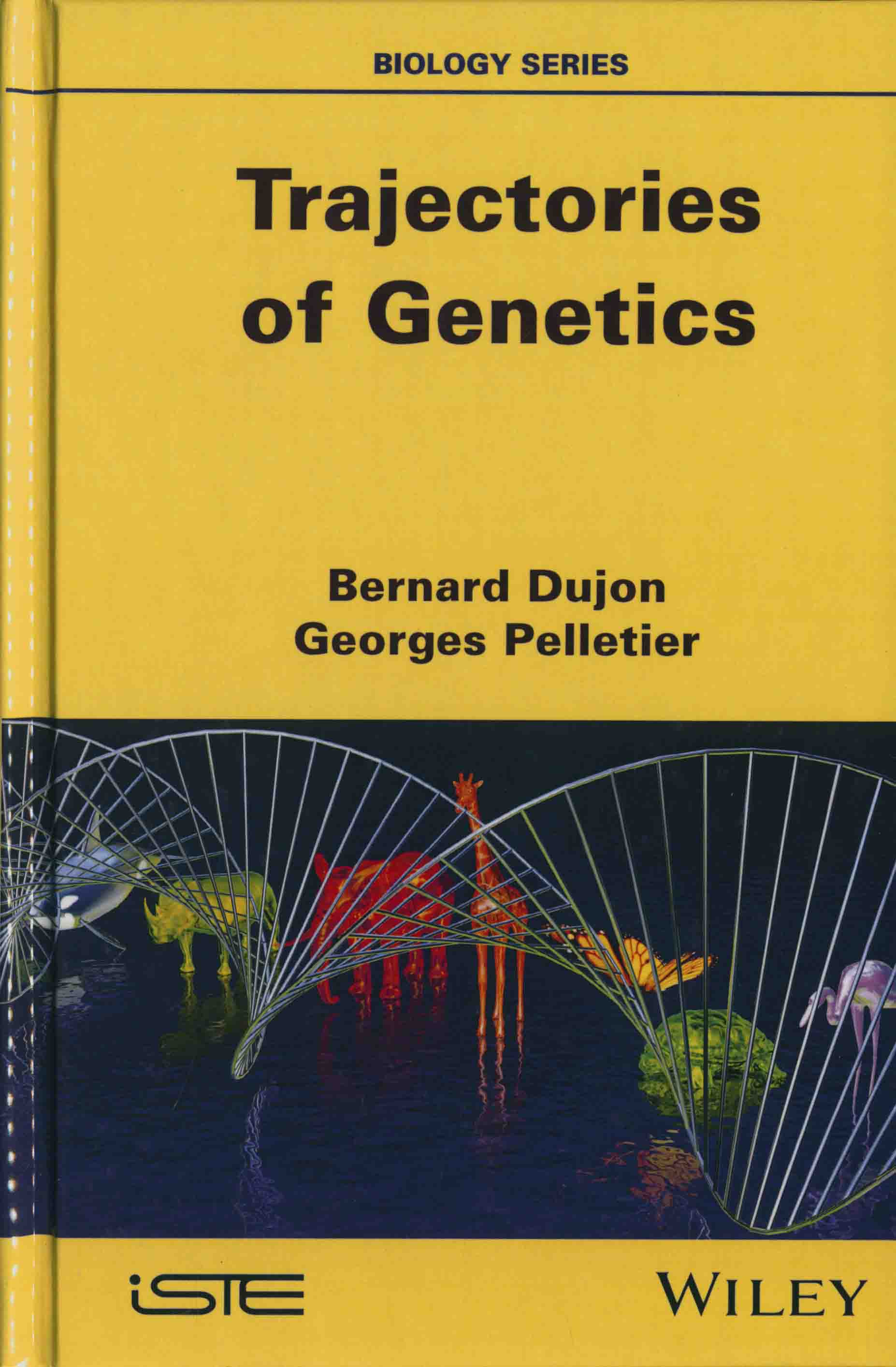 |
Trajectories of genetics / Bernard Dujon, Georges Pelletier -- London: USTE Ltd ; 2020. Hoboken, NJ : John Wiley & Sons, Inc. – (58.14 /D876) |
Contents
Introduction
Chapter 1. Following Ariadne's Thread from Genetics to DNA.
1.1. The birth of genetics
1.2. The foundations of a new science
1.3. Gene, locus and genetic maps
1.4. Mutagenesis: first ideas on the material nature of the gene
1.5. First ideas on gene products
1.6. The order of things and the elements of disorder
1.7. Dissecting the invisible: allelism, cistron and the locus again
1.8. The DNA trail
1.9. Important ideas to remember
1.10. References
Chapter 2. The Molecular Nature of Genes and Their Products
2.1. DNA and its replication
2.2. Permanence and alteration of DNA, mutations
2.3. Protein synthesis and the central dogma of molecular biology
2.4. The genetic code: how to read the genetic message
2.5. First paradigm of gene expression: the bacterial lactose operon
2.6. Reverse transcription and retrogenes
2.7. Exons, introns and splicing: the first complexity of RNA life
2.8. Sequence editing: the second complexity of RNA life
2.9. RNA interference and epigenetics
2.10. Important ideas to remember
2.11. References
Chapter 3. Chromosomes and Reproduction
3.1. The "true" chromosomes
3.2. Sexual reproduction and alternating generations
3.3. Meiosis
3.4. Genetic determinism of sex
3.5. Clonal reproduction and its derivatives
3.6. The genetics of organelles
3.7. Important ideas to remember
3.8. References
Chapter 4. From Genetic Engineering to Genomics
4.1. Restriction of DNA
4.2. Recombinant DNA and the birth of genetic engineering
4.3. Sequencing of biological macromolecules
4.4. The beginnings of genomics: the very first genome sequences
4.5. The trigger
4.6. The impact of the first real genomes
4.7. The human genome
4.8. New methods of genome sequencing and the current state of genomics
4.9. Important ideas to remember
4.10. References
Chapter 5. Uniqueness and Polymorphism of Genomes
5.1. The immensity of nucleic acid sequences
5.2. Components of genomes and their replication
5.3. A little perspective on the content of genomes
5.4. Traces of the past and driving forces for the future
5.5. Genes in genomes
5.6. Genes and genetic determinism
5.7. Natural populations: pan-, core-genomes and SNP
5.8. Population genomics
5.9. The genetics of genomes
5.10. Important ideas to remember
5.11. References
Chapter 6. Natural Dynamics and Directed Modifications of Genomes
6.1. The dynamics of genomes
6.2. Hereditary acquisitions
6.3. Directed manipulations of genomes: principles and tools
6.4. Directed manipulations of genomes: applications
6.5. Important ideas to remember
6.6. References
Chapter 7. Of Genes and Humans
7.1. Ancient DNA and human history
7.2. Traces of the past in today's human genome
7.3. Traces of past climates in the trees of our forests
7.4. The domestication of cultivated plants
7.5. Selection of livestock
7.6. Conclusion
7.7. Important ideas to remember
7.8. References
Chapter 8. Genetics and Human Health
8.1. "Mendelian" and multifactorial diseases, a continuum of complexity
8.2. Interpretation and use of DNA sequences
8.3. Autism
8.4. Gene therapy
8.5. The multiple genetic causes of cancers
8.6. Microbiota
8.7. Important ideas to remember
8.8. References
Chapter 9. Now and Tomorrow
9.1. A living world to be further explored
9.2. Genome synthesis
9.3. New lives
9.4. Important ideas to remember
9.5. References
Conclusion
Glossary
References
Index